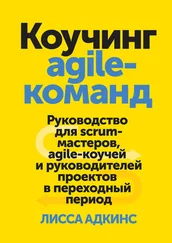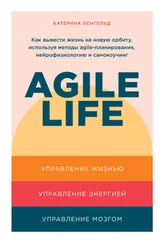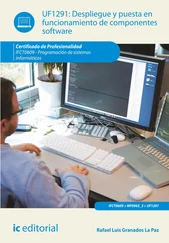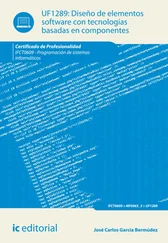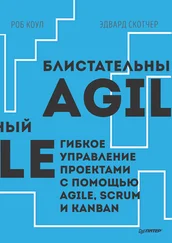The raising of the status of programmers suggested by the Theory Building View will have to be supported by a corresponding reorientation of the programmer education. While skills such as the mastery of notations, data representations, and data processes, remain important, the primary emphasis would have to turn in the direction of furthering the understanding and talent for theory formation. To what extent this can be taught at all must remain an open question. The most hopeful approach would be to have the student work on concrete problems under guidance, in an active and constructive environment.
Conclusions
Accepting program modifications demanded by changing external circumstances to be an essential part of programming, it is argued that the primary aim of programming is to have the programmers build a theory of the way the matters at hand may be supported by the execution of a program. Such a view leads to a notion of program life that depends on the continued support of the program by programmers having its theory. Further, on this view the notion of a programming method, understood as a set of procedures to be followed by the programmer, is based on invalid assumptions and so has to be rejected. As further consequences of the view, programmers have to be accorded the status of responsible, permanent developers and managers of the activity which the computer is a part, and their education has to emphasize the exercise of theory building, side by side with the acquisition of knowledge of data processing and notations.
References
Brooks, R.E. Studying programmer behaviour experimentally. Comm. ACM 23(4):207-213, 1980.
Feyerabend, P. Against Method. London: Verso Editions, 1978; ISBN: 86091-700-2.
Floyd, C. Eine Untersuchung von Software-Entwicklungs-Methoden. Pp.248-274 in Programmierumgebungen und Compiler, ed H. Morgenbrod and W. Sammer, Tagung I/1984 des German Chapter of the ACM. Stuttgart: Teubner, 1984; ISBN: 3-519-02437-3.
Kuhn, T.S. The Structure of Scientific Revolutions, Second Edition. Chicago: University of Chicago Press, 1970; ISBN: 0-226-45803-2.
Medawar, P. Pluto's Republic. Oxford: University Press, 1982; ISBN: 0-19-217726-5.
Moher, T. and Schneider, G. M. Methodology and experimental research in software engineering, Int. J. Man-Mach. Stud. 16: 65-87, 1. Jan. 1982.
Oskarsson, Ö. Mechanisms of modifiability in large software systems. Linköping Studies in Science and Technology, Dissertaions, no. 77, Linköping, 1982; ISBN: 91-7372-527-7.
Polya, G. How To Solve It. New York: Doubleday Anchor Book, 1957.
Polya, G. Mathematics and Plausible Reasoning. New Jersey: Princeton University Press, 1954.
Popper, K.R., and Eccles, J.C. The Self and Its Brain, London: Routledge and Kegan Paul, 1977.
Ryle, G., The Concept of Mind, Harmondsworth, England: Penguin, 1963, first published 1949.
Applying Theory Building
Naur's concept of programming as theory building helps us understand Extreme Programming's metaphor building activity.
Kent Beck once suggested that it is useful to simplify the general design of a program to a single metaphor. An example might be, "this program really looks like an assembly line, with things getting added to a chassis along the line," or "this program really looks like a restaurant, with waiters and menus, cooks and cashiers."
Good metaphors have the property that the many associations we create around the metaphor turn out to be appropriate to our programming situation.
That is exactly Naur's idea of passing along a theory of the design.
If "assembly line" is an appropriate metaphor, then later programmers, considering what they know about assembly lines, will make guesses about the structure of the software at hand, and find that their guesses are "close." This is an extraordinary power for just the two words, "assembly line."
A good metaphor increases the design's consistency during development.
Consider ten programmers, working as fast as they can, in parallel, each of them making design decisions and adding classes as they go. Each will necessarily develop her own theory as she goes. As they add code, the theory that binds their work becomes less and less coherent, more and more complicated. Not only maintenance gets harder, but their own work gets harder. At the end, the design is what they refer to as a "kludge."
With a common theory, on the other hand, they add code in ways that fit together. An appropriate and shared metaphor allows them to guess accurately where someone else on the team just added code, and how to fit the new piece in with it.
Programming as theory building also informs us about tacit knowledge versus documentation. Given that people are good at looking around, and the documentation is almost certainly behind the current state of the program, what is worth putting into the documentation? The answer is: that which helps the next programmer built an adequate theory of the program.
This is enormously important. The point of the documentation is to jiggle memories in the reader, set up certain pathways of thoughts about metaphors or experiences. Such documentation is much more stable over the life of the program than just naming the pieces of the system currently in place.
Several metaphors could be used. The designers might say that this section implements a fractal compression algorithm, that section is a basic accounting ledger, the user interface follows the model-observer design pattern, and so on. A few good drawings of the major components and their interactions with some descriptive text about each one's purpose will take the next team a long way.
One major purpose of the source code is to communicate some coherent theory to the next programmer - who might be the original programmer four months later.
Simple and consistent naming conventions contribute to this theory building. When people talk about "clean code," a large part of what they are referring to is how easily the reader can build a coherent theory of the system.
The point is, the documentation (prose, pictures and code) cannot (and so need not) say everything. It's purpose is to help the next programmer build an accurate theory about the system.
Pelle Ehn, Wittgenstein's Language Game
In Work-Oriented Devlopment of Software Artifacts, Pelle Ehn describes his experiences on a series of projects that explored making software easier to use, more appropriate to its final use, and made by both programmers and end users. For me, the high point of the book was the way in which he considers software development in the context of four philosophers: Descartes, Marx, Heidegger, and Wittgenstein.
A person working in the style of Descartes considers there to be an external reality worth describing, and turns her efforts toward capturing that reality in requirements, in models, and in the code. The first half-century of software development is filled with the Cartesion work style.
A person working in the style of Marx first asks, "Whom does this new system benefit? What changes in the social power structure accrue from its deployment?" This is a good question to consider, whether or not you like Marx.
A person working in the style of Heidegger considers the system for its efficacy as a tool. Ideally, the user does not "see" the system at all, but rather, sees through the system to the task being performed. For example, when I am typing, I don't "see" the word processor, I see the page growing text. An accomplished pianist sees the music being formed, not the piano; a good carpenter sees the nail going into the wood, not the hammering tool. Heidegger's frame can help us produce systems more fit for use.
It is only the style of Wittgenstein that directly opposes the style of Descartes. A person working in this style views the unfolding of the software design as the unfolding of a language game, in which new words are added to the language over time.
Читать дальше

